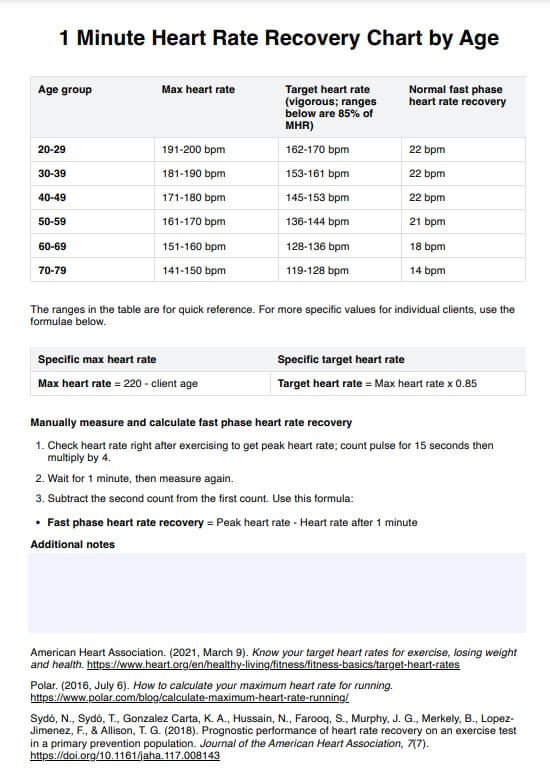A normal heart rate recovery (HRR) is defined by a decrease of more than 12 beats per minute (bpm) from the peak heart rate. For elite athletes, HRR may be as high as 29-40 bpm.

1 minute heart rate recovery chart by age
Heart rate recovery is a great indicator of heart health—use our HRR by age chart to know normal rates and gain more insight on overall fitness.
1 minute heart rate recovery chart by age Template
Commonly asked questions
A reasonable recovery heart rate varies by age, with younger individuals typically experiencing faster recovery rates. For precise benchmarks, refer to our 1 Minute Heart Rate Recovery Chart by Age template, which provides age-specific ranges to gauge optimal recovery.
A reasonable cardio recovery rate for a 60-year-old woman is around 18 bpm. To know the max heart rate, target heart rate, and ideal heart rate recovery rates for different age groups, use our template.
EHR and practice management software
Get started for free
*No credit card required
Free
$0/usd
Unlimited clients
Telehealth
1GB of storage
Client portal text
Automated billing and online payments











